Here at Utahmarijuana.org, we are huge proponents of regular consultations between Medical Cannabis patients and their medical providers. You can never consult too much when you are dealing with a chronic medical condition. Where Medical Cannabis is concerned, there is yet another reason beyond getting the most from your treatment: state purchase limits.
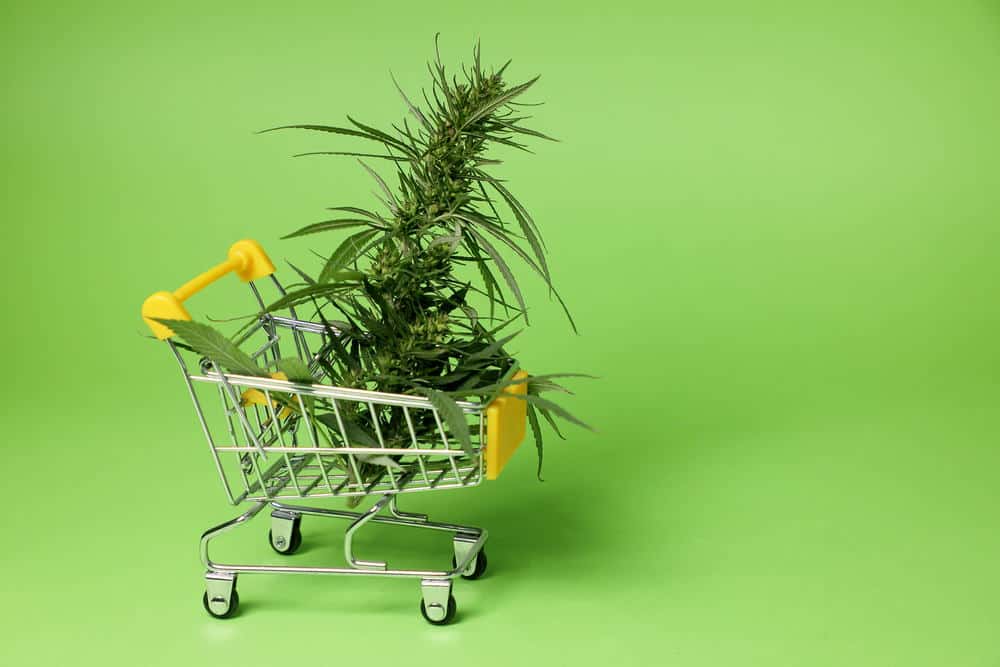
Utah’s Medical Cannabis law has come a long way. Lawmakers have done their best to craft a program that complies with the original voter proposition and meets patient needs. To that end, they have placed limits on the amount of Medical Cannabis patients can purchase.
State law allows Medical Cannabis patients to purchase up to 113g of unprocessed flower or 20g of THC in non-flower products, including vape cartridges and tinctures. The limits apply to monthly purchases.
This means that if you are a patient who prefers unprocessed flower, you do not have to purchase the total amount in one visit to your local pharmacy. You can make four separate purchases per month up to the maximum of 113g. The same goes for THC products.
Although it might not seem like regular consultations with your medical provider matter in terms of state purchase limits, they really do. Here is why this is so:
Let us say your Qualified Medical Provider (QMP) wrote in your dosing guidelines that you should consume half a gram of cannabis daily. The total monthly amount for those guidelines would be 15g. That would be your monthly limit.
Even though state law allows the purchase of up to 113g of unprocessed flower per month, you would be subject to the lower limit because of your medical provider’s dosing guidelines. In essence, your purchases are limited to the least possible amount needed to treat your condition, up to the 113g and 20g limits established by the Utah statute.
We can break this down into even simpler terms by saying that your medical provider needs to know how you are doing on your Medical Cannabis journey. If your current dosage guidelines are not cutting it for you, make an appointment to consult with your medical provider. Your medical provider can modify the guidelines as needed.
It has been our experience that QMPs are genuinely interested in helping their patients get dosage and frequency right. The right dosage is key to helping get the most from your Medical Cannabis treatment.
As long as you are consulting with your medical provider about dosage guidelines, we recommend that you talk about delivery methods as well. Delivery method is one of the more confusing aspects of Medical Cannabis, especially among patients new to cannabis treatments.
Delivery methods impact what you feel as well as how quickly you feel it. Vaping and tinctures are among the two most popular delivery methods because they introduce THC into the bloodstream very quickly. On the other hand, a patient might not begin to feel the effects of an edible for hours.
Utah’s Medical Cannabis statute designates three types of medical providers to assist patients with Medical Cannabis. The QMP is one of them. The other two are Limited Medical Providers (LMP) and Pharmacy Medical Provider (PMP). The one thing that they all have in common is a desire to help.
Remember that state law limits the amount of Medical Cannabis you can purchase each month. Be sure to consult with your medical provider if your current dosage guidelines are not working for you.
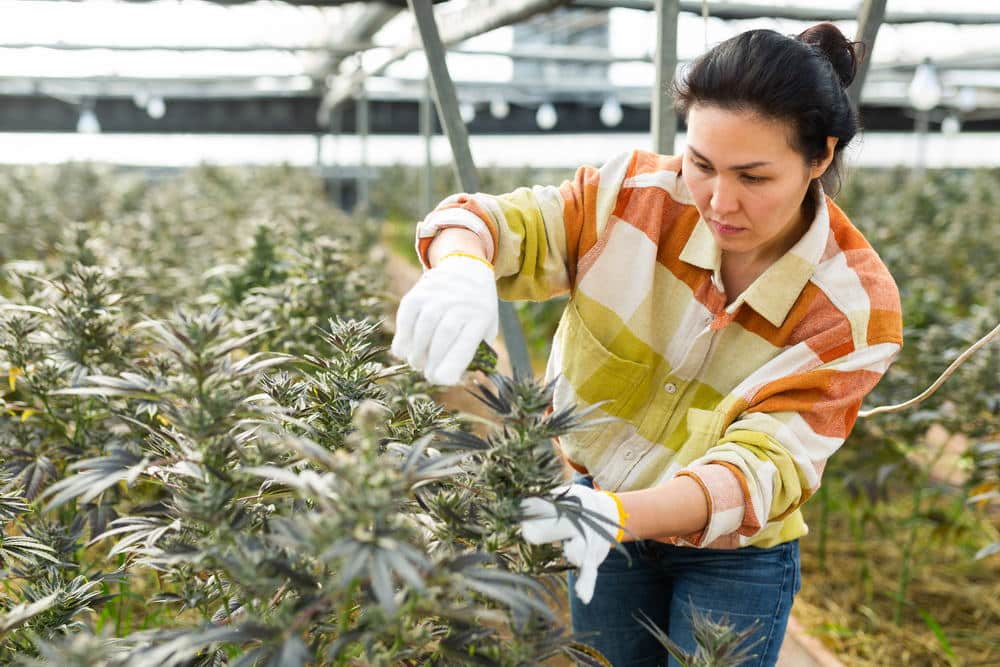
Have you ever wondered what it takes to get a job in the Medical Cannabis industry? Here in Utah, we have four basic categories of jobs: cultivation, processing, testing, and retail sales. Some jobs require extensive education, training, and even cannabis certification, such as to be a Pharmacy Medical Provider (PMP). However, most do not have such stringent requirements.
Certification? Yes, indeed. Believe it or not, professional cannabis certification is a thing. Schools and training programs are popping up all over the country in an effort to help more people launch their careers in cannabis. The Cannabis Training University is just one example. They offer a 12-week online training course they refer to as the Master of Cannabis Certification Program.
Here at Utahmarijuana.org, one of the many resources we offer Medical Cannabis patients is our Utah in the Weeds podcast. It is not uncommon for us to interview cannabis professionals who were patients before getting into the industry. We have heard from plenty of patients who were so overwhelmed by the difference Medical Cannabis made that they decided they wanted to get involved in helping others.
There weren’t many recognized training and certification programs when the push for legal Medical Cannabis began more than 25 years ago. Even today, the number of certification programs is scant compared to other industries, like healthcare and IT. But as the cannabis industry grows, the demand for certification and training seems to be growing along with it.
It goes without saying that training programs will vary from one organization to the next. The things a student might learn will depend on the type of career they want to pursue. For instance, a career in cultivation would dictate training with a heavy emphasis on agriculture, botanical science, and so forth.
In the processing sector, training could include everything from proper extraction methods to creating cannabinoid and terpene profiles. These days, cannabis processing is a more scientific endeavor thanks to the ongoing pursuit of better and more effective products.
Even pharmacy technicians can now be certified. A pharmacy tech is someone who works in a Medical Cannabis pharmacy to dispense medications and answer product questions. Pharmacy techs work in concert with PMPs to ensure that patients get the right medicines for their particular needs.
Certification isn’t necessarily required to get a job at a Utah Medical Cannabis pharmacy. Obviously, hiring requirements vary. But the one thing we do know is that the industry continues to grow with each passing quarter. There are jobs out there in nearly every sector of Medical Cannabis.
The way we see it, the Medical Cannabis industry has nowhere to go but up. Things continue to happen here in Utah and the rest of the country, things that paint a very bright future for Medical Cannabis. With that being the case, we expect that even more jobs will be created as time goes by.
If Medical Cannabis is something you are passionate about, and you’re looking to embark on a new career, think about getting into the industry. Cannabis is still considered an emerging industry, so there are bound to be plenty of opportunities from the time you get in until the day you’re ready to retire.
Professional training and certification programs are there to help you get started. And even after you land that first job, you cannot go wrong by earning additional certifications. The more training you have under your belt, the further you can go in an industry that seems to have few limits right now.
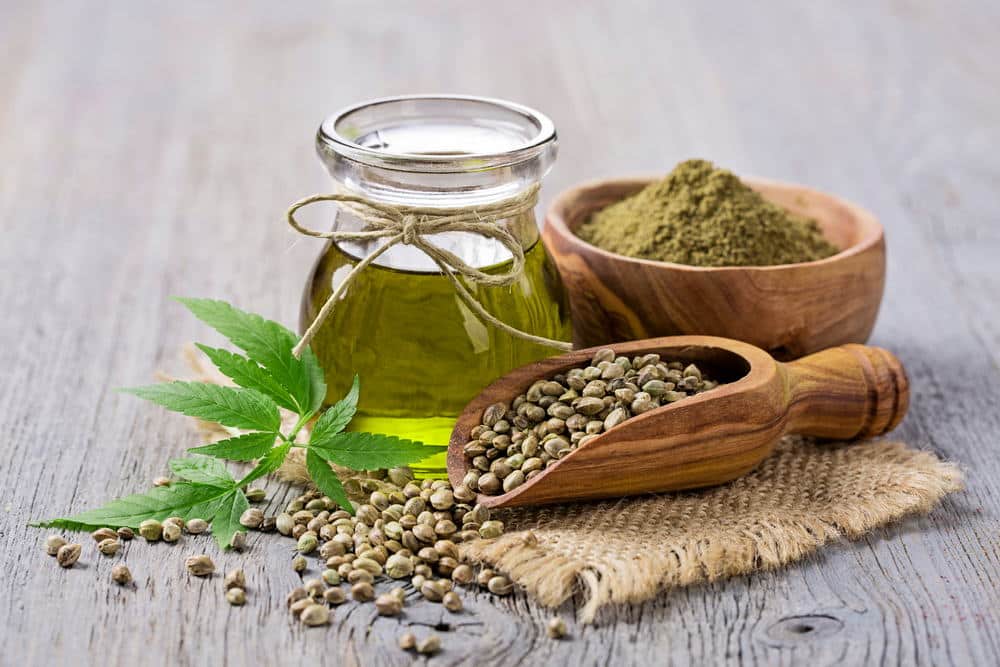
New patients are applying for their Utah Medical Cannabis Cards all the time. Growth has been so impressive that the Beehive State now counts approximately 70,000 active card holders. With so many people on board, it is not surprising to see some confusion.
We find that new patients are often confused about four things: cannabis, hemp, CBD, and THC. The confusion stems from the assumption that all four things are one and the same. They aren’t. So to clear the air, let us discuss what makes them different.
Our discussion starts with the humble cannabis plant. Cannabis has been around for thousands of years. It is found around the world. Cannabis has historically been used for medical, industrial, and personal purposes throughout the centuries.
Like most plant species, cannabis is not a single type of plant. There are multiple varieties classified mainly by the chemical compounds they contain. The two most common cannabis types are marijuana and hemp. Herein lies the confusion.
When we talk about Medical Cannabis, we are referring to marijuana and marijuana-derived medicines. Utah lawmakers prefer the term “Medical Cannabis” over “medical marijuana” due to the link between marijuana and recreational consumption. Our program is strictly medical.
As for hemp, it is also a type of cannabis. Its compounds differ from those found in marijuana, so its effects on the human body are also different. The primary difference between Medical Cannabis and hemp is THC volume.
THC volume leads directly to the next point of confusion: THC versus CBD. Both are cannabinoids that naturally occur in cannabis plants. But THC and CBD are not the only cannabinoids. Cannabis plants contain more than 100 cannabinoids, in varying concentrations, along with dozens of terpenes.
Medical Cannabis producers routinely mix cannabinoids and terpenes to create unique profiles. Each profile offers something slightly different, giving Medical Cannabis patients choices in their search to find the best medicines.
Getting back to the main difference between hemp and Medical Cannabis, we are looking at a THC measurement. Again, remember that Medical Cannabis is marijuana used for medical purposes.
Under federal law, a cannabis plant with at least 0.3% THC content is marijuana. So Medical Cannabis products contain at least that much THC. On the other hand, a cannabis plant with less than 0.3% THC by volume is classified as hemp.
The predominant cannabinoid in marijuana and Medical Cannabis is THC. Likewise, the predominant cannabinoid in hemp is CBD. THC is psychoactive where CBD is not. Both cannabinoids have medical value, which is why both are discussed within the larger topic of Medical Cannabis.
The interesting thing about CBD is that it is legal across the country. You don’t need a Medical Cannabis card to purchase CBD products. Moreover, they can be found just about anywhere. CBD is available at grocery stores, department stores, traditional pharmacies, etc. You can even buy it online.
THC is different. In Utah, Medical Cannabis can only be purchased at licensed pharmacies, for medicinal use. But there are some products with THC that can be sold over the counter without the need for a Medical Cannabis Card.
This is possible because of a federal law change that happened in 2018. By law, a hemp product sold in the United States must contain no more than .3% THC by dry weight. This means that an edible, such as a gummy, that weighs a total of 4 grams (4,000 milligrams) can contain up to 12 milligrams of hemp-derived THC. Click here for more information on purchasing federally compliant gummies made with hemp-derived THC.
Hopefully, this post has cleared up any confusion you may have had regarding hemp, marijuana, CBD, and THC. All four things are related in the sense that they all go back to the cannabis plant. Yet they are all distinct and different in their own ways.
Don’t worry if you’re still confused. There is a lot to learn in the Medical Cannabis space. You will get there in time.
It is a pretty safe bet that you’re familiar with Medical Cannabis delivery methods, such as vaping, using tinctures, and ingesting gummies, tablets, etc. But have you ever considered transdermal patches? Transdermal preparations are among the approved products in Utah. They are also a different way to use Medical Cannabis that don’t get a lot of attention.
Transdermal preparations would fall under the topical category. As topicals, you apply them to the skin. The idea is that the medication travels through the skin on the way to the bloodstream. By contrast, vaping delivers medicine to the bloodstream through the lungs while tinctures deliver it through the skin underneath the tongue.
A good way to think of a transdermal Medical Cannabis product is to compare it to a nicotine patch for smoking cessation. Perhaps you know someone who has used nicotine patches. Maybe you have used them yourself. You stick the nicotine patch to your skin (usually on an arm) and then mostly forget about it. It slowly releases nicotine into your skin and on to the bloodstream.
The beauty of the nicotine patch is that it delivers a continuous stream of nicotine at a very slow rate. Its effects are consistent and more easily controlled. By applying the same concept to Medical Cannabis, manufacturers of transdermal products give patients another option for slow, steady cannabinoid delivery.
By now you are probably wondering what types of patients would use transdermal patches. There is no particular group per se, but transdermal products are ideal for people who need all-day relief from their symptoms. They can just apply the patch early in the day and not have to worry about it any further.
Transdermal products are also good choice for people who don’t want to vape or dry heat raw plant material. The same goes for folks who aren’t all that plussed by tinctures. Again, the number one benefit of the transdermal product is that it consistently delivers medication throughout the day.
Like we say all the time, transdermal patches may or may not work for you. Results vary among patients. For starters, your particular qualifying medical condition might be best treated with another form of Medical Cannabis. That’s for you, your medical provider, and your pharmacist to determine.
There is also the reality that patients respond differently. A friend of yours might consider transdermal patches the greatest thing since sliced bread. You might decide that tinctures still work best for you. The only way to know for sure is to try.
If you would like to give transdermal patches a try, ask about them on your next visit to the Medical Cannabis pharmacy. You can always buy one and see how it goes. We would recommend tracking your usage so as to give your Pharmacy Medical Provider (PMP) the data they need to advise you.
Come to think of it, we think it’s a good idea to track all your Medical Cannabis consumption. Regardless of your preferred delivery method and strains, tracking is a fantastic way to help both you and your PMP better understand how Medical Cannabis is working for you.
As for the transdermal patch, it is one of many options we have available in Utah. Go ahead and research the transdermal principle and see what you think. Then talk it over with your medical provider. A transdermal patch could turn out to be the best product for you. And if not, you still have other choices.
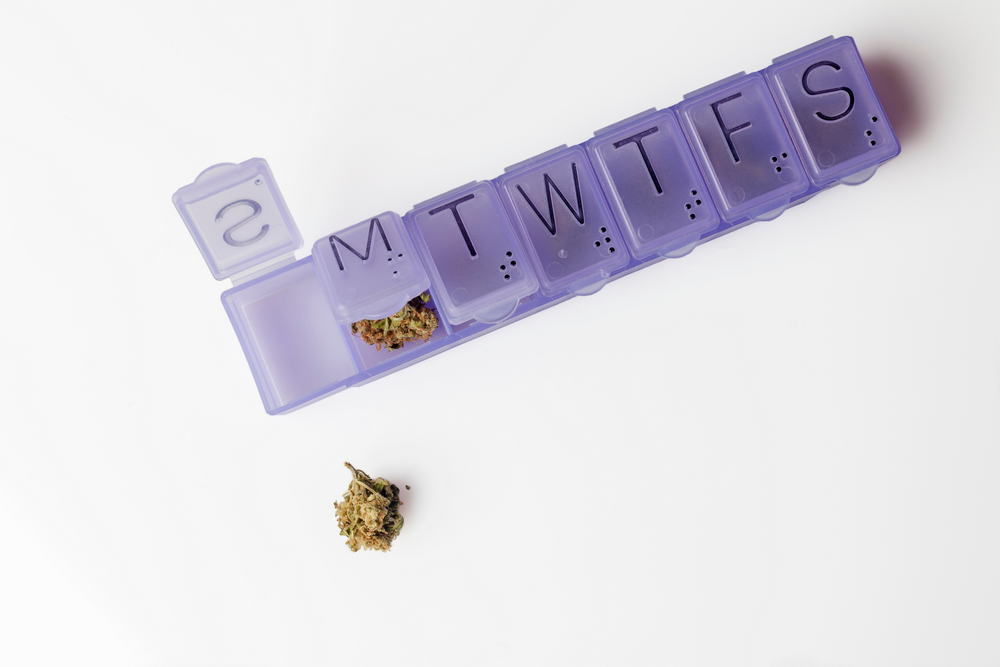
Obtaining or renewing a Medical Cannabis Card in Utah requires some sort of visit or consultation with a Qualified Medical Provider (QMP) or Limited Medical Provider (LMP). Though not all QMPs and LMPs are doctors, let us assume they are for the purposes of this post. What do you do if your doctor doesn’t offer cannabis dosage guidance during your consultation?
This is not an unusual scenario, especially when patients consult with LMPs. An LMP is any physician, advanced practice nurse, or orthopedist with prescribing authority in the state of Utah. LMPs do not undergo any additional training and they are limited to 15 Medical Cannabis recommendations at any one time.
It’s not unusual for LMPs to not be as familiar with Medical Cannabis as their QMP counterparts. All that aside, Utah regulations don’t require either type of provider to offer dosage and delivery guidance. The law says they “may” offer it, or they can choose to leave the guidance to a Pharmacy Medical Provider (PMP).
There could be any number of reasons a doctor would not want to offer dosage and delivery guidance. For many, it is the perception that they lack the proper qualifications. Truth be told, doctors do not spend a lot of time learning about the endocannabinoid system or Medical Cannabis in medical school. The same goes with most medications. Doctors don’t study medications nearly as much as pharmacists do.
A PMP in the state of Utah is a trained and licensed pharmacist who has undergone additional training for Medical Cannabis. The PMP’s education in pharmacology gives them the extended knowledge doctors lack. PMPs are more than qualified to offer dosage and delivery guidance. They are familiar with the endocannabinoid system; they understand how Medical Cannabis interacts with that system.
Medical Cannabis users should understand that dosage and delivery guidelines are just that: guidelines. Despite state lawmakers’ efforts to treat Medical Cannabis just like any other prescription drug, federal law still prevents doctors from writing literal prescriptions. Therefore, any guidance offered by a QMP, LMP, or PMP constitutes advice – albeit good advice – rather than ironclad instructions.
Ultimately, each patient decides for themself how to best use Medical Cannabis. Still, consulting with a medical professional is the standard recommendation. We agree wholeheartedly with it. Regularly consulting with a QMP or PMP is the best way to ensure that a patient makes the most of Medical Cannabis therapies.
If you find yourself in a position of having no dosage or delivery guidance from your doctor, please consult with your PMP whenever you go to the Medical Cannabis pharmacy to purchase medications. In between visits, keep track of your cannabis use. Write down every instance of cannabis consumption. Make a point to record:
Taking information with you to the pharmacy means equipping your PMP with the information they need to give you sound guidance. During your consultations, be sure to ask any and all questions you have. Your PMP doesn’t know what you’re thinking. They rely on your questions to figure out what is going on with you.
It is actually not uncommon for doctors to be reluctant to offer Medical Cannabis dosage and delivery guidance. They generally don’t know as much about cannabis as pharmacists, by design. In the absence of extensive knowledge, many doctors just feel it’s more appropriate to leave guidance to the PMP. So, if that has been your experience, be aware that it’s a perfectly normal one.

Utah residents scored a major victory when Proposition 2 was passed back in 2019. Since then, state lawmakers have worked hard to develop a good Medical Cannabis program that works for everyone. Keeping things from getting out of hand has meant implementing certain rules. For instance, there are limits on how much Medical Cannabis a patient can purchase and possess at a time in Utah.
The rules make it clear that a Medical Cannabis Card is not a license to do anything you want. Patients with valid cards must buy their medicines from a licensed pharmacy. They aren’t allowed to give their medications to others. If they arrange for home delivery, they must be present to accept the package when it arrives.
As for purchase and possession limits, they are put in place for a reason. We outline the rules below. If you are a new patient, do yourself a favor and familiarize yourself with them.
The language in Utah’s Medical Cannabis law stipulates that patients can possess enough Medical Cannabis to cover 30 days of treatment. In essence, you can possess a one-month supply at any given time. But there are conditions:
The exact same restrictions apply to purchases. This creates a sticky situation for patients in that they need to be careful about scheduling Medical Cannabis purchases in order to limit overlap.
Scheduling can be challenging, for sure. You could still experience overlap even after your best attempts to avoid it.
State law is also pretty specific in terms of acceptable delivery methods. The most important thing to note is that Medical Cannabis patients in the Beehive State are not allowed to smoke cannabis. It can be dry heated in a specialized vaping device. And of course, there are liquid vapes.
In addition, patients can get their medicine in the form of:
All unprocessed cannabis flower must be sold in opaque tamper-resistant packaging that includes a printed expiration date. The amount of plant material in each package must not exceed legal weight limits by more than 10% at the time of packaging.
If all of this seems confusing to you, no worries. Licensed pharmacies know the drill. They know what they can and cannot sell. They also know how much they are allowed to sell to patients during any given visit. You can always ask pharmacy staff if you have questions.
If you are a new Medical Cannabis patient, we encourage you to spend some time talking with your Pharmacy Medical Provider (PMP) to learn more about dosage and delivery. Your PMP is a wealth of information that is hard to find anywhere else.
Also bear in mind that Medical Cannabis pharmacies are required to keep meticulous records of every purchase. So even if you lose track and forget how much you bought and when, your local pharmacy will have those records. Together, you can make sure that everything you do is on the up and up.
Finally, a word about visitors to the state: they can apply for temporary Medical Cannabis cards prior to their visits. Purchase and possession limits still apply, and they aren’t allowed to bring cannabis with them into the state. All Medical Cannabis consumed in Utah must be bought here.
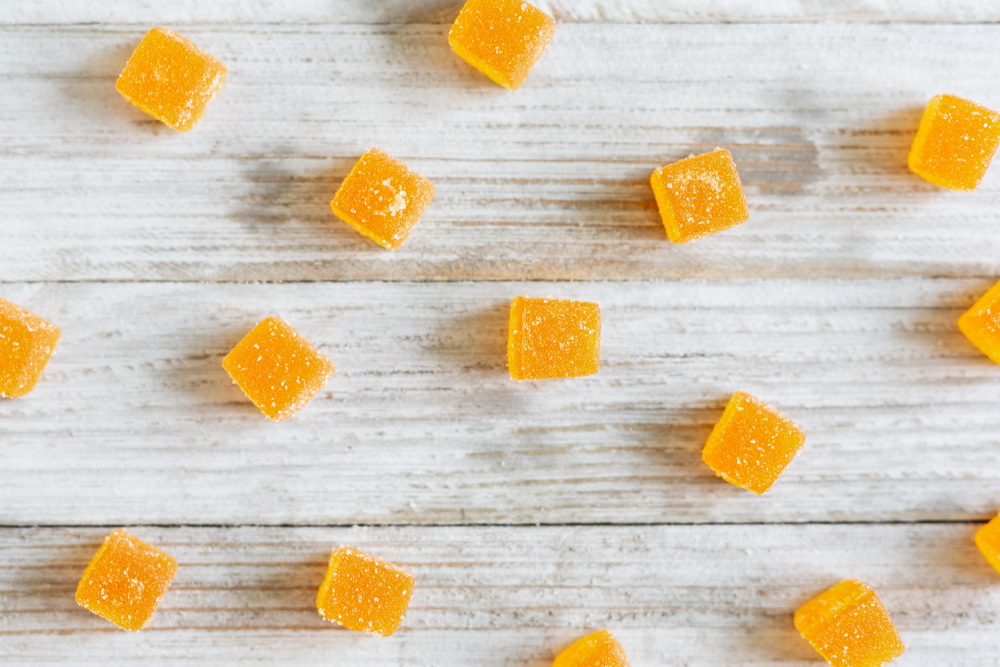
The proliferation of Recreational and Medical Cannabis across the country has given birth to an entirely new industry involving growers, processors, retailers, and testers. Unfortunately, it has also created new avenues for black market operators to push competing products – products like trap gummies.
Trap gummies are the latest attempt by some manufacturers to get around THC limits through creatively manufactured gummies. In essence, a trap gummy is any cannabis edible manufactured in a way that does not comply with established regulations. The products are often designed to mimic regulated products with the goal of preying on unsuspecting consumers who are not paying attention.
There are number of common-sense reasons to avoid trap gummies. First of all, you don’t know what you’re getting. Makers of these non-regulated products do not have them tested. Only they know what is actually in them. Contrast that to what you find at a Medical Cannabis Pharmacy in Utah.
Every aspect of the Medical Cannabis business is regulated in the Beehive State. When you buy a THC gummy product at a licensed pharmacy, you can rest assured that it meets minimum state standards, at the very least. It may even exceed some of the standards.
As an added bonus, everyone in the supply chain knows those from whom they got their product. If anything goes wrong, the product can be traced back to its source. That is a no-go with trap gummies. Consumers have no idea from where they actually came.
Without verifiable tests and accurate labels, there’s no way to know how much THC you’re getting in a trap gummy. For all anyone knows, the hottest product on the black market could have no THC at all. It could also have three or four times the amount a user is expecting.
Not being aware of how much THC you are ingesting is never good. But it is especially bad for someone who uses Medical Cannabis. Why? Because it’s difficult enough to find the perfect balance of dosage, frequency, and delivery method. If you don’t know what you’re actually using, coming up with the best possible treatment plan is nearly impossible.
You have probably figured out by now that there aren’t a lot of positive things that we can say about trap gummies. But humor us as we throw one more thing at you: other cannabinoids. These other cannabinoids can be problematic if you assume you’re buying a CBD product that may not be as advertised.
We’re guessing you’ve heard about the Delta-8 controversy by now. Delta-8 THC is an isomer of Delta-9, the very cannabinoid that’s currently illegal under federal law. It turns out that Delta-8 can also make you high, though it is a different kind of high.
All of this is to say that you could buy a trap gummy marketed as a legal CBD product that still contains a type of THC that makes you feel intoxicated. You would be left scratching your head and wondering what happened.
Unfortunately, there is still another trick black market operators rely on. They take a product that would normally be classified as THC and simply boost CBD volume until the THC falls below the 0.3% threshold. There’s still more THC in it than you bargained for.
Cannabis consumption in Utah is limited to medical purposes only. To that end, we have a strict system that ensures patient safety and product purity. We recommend you stay away from products not sold in licensed pharmacies. That includes trap gummies.
During your time as a Medical Cannabis patient, you may have noticed that your medicine gradually loses its effectiveness. As a result, your Pharmacy Medical Provider (PMP) has suggested that you take brief and regular breaks. You do and discover that things go back to normal. Your medicine starts working again. Do you understand why this is?
Those of us in the Medical Cannabis field recommend that patients take regular breaks. The breaks are sometimes referred to as tolerance breaks – or T-breaks if you prefer. The reason for our recommendation is found in the name itself: tolerance.
Tolerance is a physical reaction to a drug, a reaction that occurs when a person’s body gets used to that drug. Tolerance can be experienced with any kind of drug whatsoever; it is not limited to Medical Cannabis. But in the cannabis realm, tolerance is the result of how cannabinoid receptors in the brain interact with the drug.
A good way to illustrate tolerance is to discuss THC. As you know, THC is the cannabinoid that produces the high feeling in cannabis users. That feeling is the result of how THC interacts with CB1 receptors in the brain. If you only used Medical Cannabis once every few weeks, it is likely that the CB1 receptors would continue functioning normally. If you used every day though, it would be a different matter.
Cannabinoid receptors can gradually get used to the amount of THC they are exposed to. When that happens, you have the condition known as tolerance. Your brain gets used to a certain amount of THC in your system and adapts accordingly. Now, you do not experience the same effects from the same dosage. You need to increase your dosage to achieve the effects that you are looking for.
At this point, it must be made clear that tolerance is not dependence. Tolerance is simply a physical reaction to using Medical Cannabis – or any other drug, for that matter. This is not to say that marijuana dependence is impossible. It’s not. But the likelihood of it being a problem for Medical Canada’s patients under the supervision of a Qualified Medical Provider (QMP) are pretty low.
The reason for taking breaks is not to prevent dependence. Rather, it is to allow the cannabinoid receptors to reset themselves. The interesting thing is that there is no black-and-white formula we can apply to every Medical Cannabis patient.
A long-term patient using mostly Type I (THC dominant) products on a daily basis may need a break of several weeks if they have gone 10-12 months without a break. Such a long break might be too difficult for some patients, especially those who rely on Medical Cannabis to treat chronic pain. Perhaps a better plan would be to set aside three days per month as break days. The days need to be consecutive if they are at be of any value.
The bottom line is that Medical Cannabis patients should consider taking regular breaks so that tolerance doesn’t become an issue. Otherwise, obtaining medicines can get awfully expensive. Managing tolerance makes it possible to consistently use the least amount of medicine to feel better.
If you are a Medical Cannabis patient and have any questions about tolerance or taking breaks, consult with your medical provider. That could be your QMP, LMP, or PMP. Regardless, your medical provider should be able to explain tolerance to you and recommend an adequate schedule for taking breaks. Please heed their advice. It is offered for your benefit.
Cannabis plants contain more than a hundred cannabinoids along with a handful of terpenes. Among the cannabinoids are the well-known THC and CBD. That much you probably knew already. But what about CBG? Have you heard anything about it? And if so, what have you heard?
Interest in CBG is quickly growing. Researchers trying to understand how phyto-cannabinoids (plant-based cannabinoids) come to be, have discovered some interesting things about CBG. We still don’t know a lot about its potential medical benefits, but researchers are looking into that too.
CBG has been referred to as the ‘mother of all cannabinoids’ due to its relationship with the other cannabinoids in a cannabis plant. To understand this, we need to go back and first discuss the difference between cannabinoids and cannabinoid acids.
Cannabinoids do not actually occur naturally in plants. Plants give us cannabinoid acids. Before you can have THC, you need to have THCA. Likewise, you start with CBDA to produce CBD. How do you get from cannabinoid acid to active cannabinoid? Through decarboxylation.
Decarboxylation is the process of separating the carboxyl group from a cannabinoid acid. The easiest way to do that is to apply heat. That’s why burning cannabis plant material produces THC. Heat from the combustion process decarboxylates the plant’s cannabinoid acids in real time.
That brings us back to CBG. It also doesn’t occur naturally in cannabis plants. Rather, plants produce CBGA. That’s good to know. But it still doesn’t explain why CBGA is the mother of all cannabinoids.
Now we get to the fun part. Cannabis plants normally produce tons of CBGA in their trichomes. It turns out that CBGA is the precursor to all other cannabinoid acids. In other words, a cannabis plant naturally produces CBGA. When enzymes are applied to that CBGA, it is transformed into other cannabinoid acids.
That means some of a plant’s CBGA gets converted into CBDA. Some of it could get transformed into THCA as well. All the cannabinoid acids you can extract from plant material were derived from CBGA.
Growing interest in the medical potential of CBG is causing quite a stir in the Medical Cannabis community. Here is the most important thing you need to know right now: the science is incomplete. In fact, you could say it is virtually nonexistent. It wasn’t until recently that we understood CBGA as the mother of all cannabinoid acids. No significant research has been done on the substance to date.
There have been a few small-scale studies conducted to try to understand a bit more about CBGA. For example, researchers in Oregon took a look at this substance and its potential ability to either block COVID infection or reduce the symptoms of the disease. The results were promising, but only mildly so.
The researchers did not conduct their study using either human or animal patients. Rather, they simply treated human cells with CBG in petri dishes. It was a tightly controlled study in a tightly controlled environment. While CBG did not show the ability to deal with coronavirus in that experiment, the data offers little more than a reason to conduct future studies. Results achieved with cells and a petri dish do not constitute scientifically valid data that can be used to draw conclusions.
At any rate, we now know that CBGA is the precursor for all other cannabinoid acids. That is exciting stuff. Now researchers are starting to look into whether CBGA or CBG has any medical benefits. We are betting they will discover something.